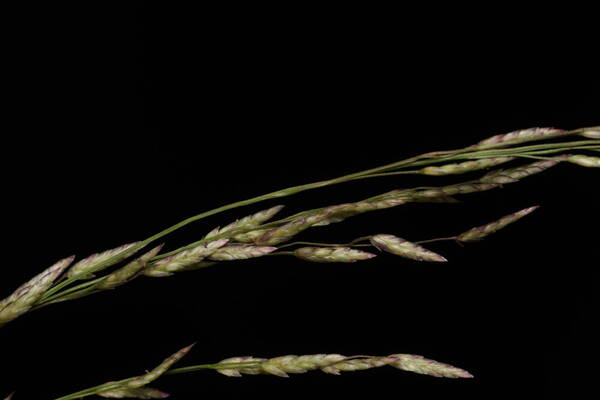Info
Subfamily: Chloridoideae
Genus etymology: Eragrostis = "love grass" [Greek] unclear origin, other etymologies such as "early grass" or "very grass" have also been speculated
Species etymology: pectinacea = "resembling a comb" [Latin] refering to the paleas retained after the lemmas fall resembling a comb
Photosynthetic type: C4 (warm season)
Nativity: naturalized - accidental
First recorded in Hawaiʻi: 1915
Map


Inflorescence


Habit



Spikelets







Description
Annuals; culms erect and decumbent at base, or prostrate, 1.5-4 dm tall, diffusely branched at base, glabrous. Sheaths often purple at base, 3-6 cm long, glabrous, collar with stiff hairs 2-2.5 mm long; ligule 0.5-1 mm long, ciliate; blades 5-18 cm long, 1-3 mm wide, upper surface scaberulous, lower surface glabrous. Inflorescences paniculate, diffuse, 7-20 cm long, the lower axils sparsely bearded; spikelets usually silvery, sometimes purple-tinged, 5-18-flowered, linear, 3-8 mm long, 1-1.5 mm wide, as long as or shorter than the pedicels, appressed along the main branches; glumes I-nerved, smooth except the keels, apex acute, first glume ca. 1 mm long, second glume ca. 1.5 mm long; lemmas somewhat -Imbricate, smooth, upper part of keel slightly scabrous, apex acute, first lemma 1.5-2 mm long, lateral nerves distinct but not prominent; palea ca. 1.5 mm long, keel scabrous. Caryopsis reddish brown, obovoid, slightly flattened ventrally, 0.8-1.2 mm long. [2n = 40, 60, 80.]
(Description source: O’Connor, P.J. 1990. Poaceae, pp. 1481–1604. In: Wagner W.L., Herbst D.R. & Sohmer S.H. (eds.)., Manual of the flowering plant of Hawaiʻi. Vol. 2. University of Hawaii Press & Bishop Museum Press, Honolulu )